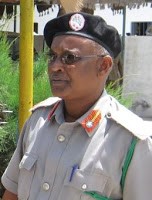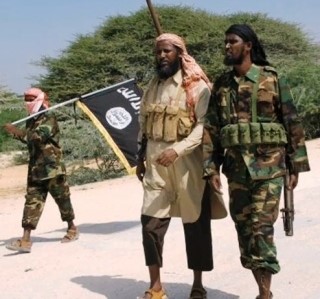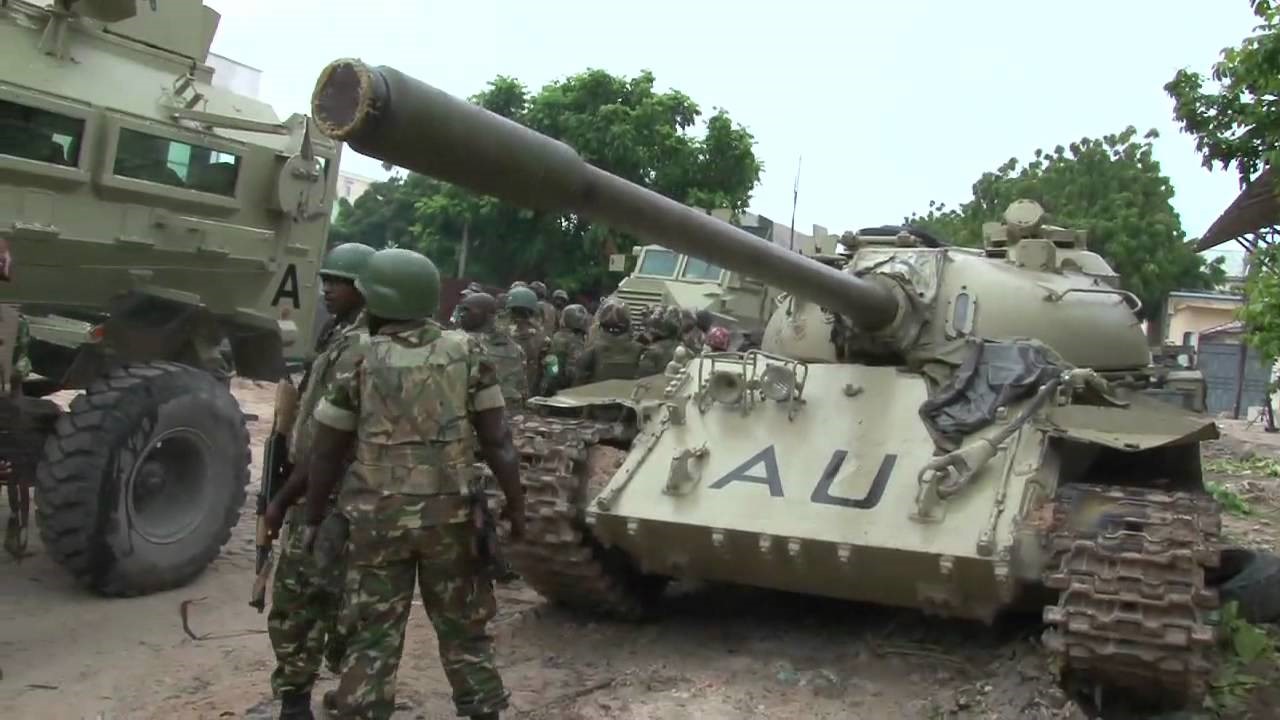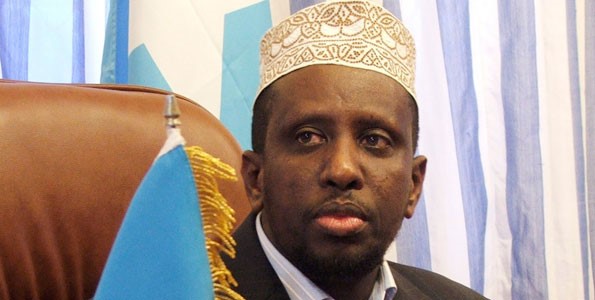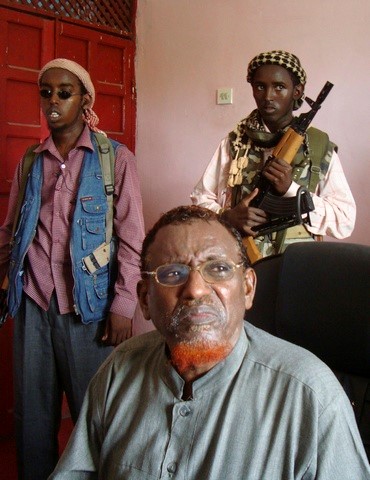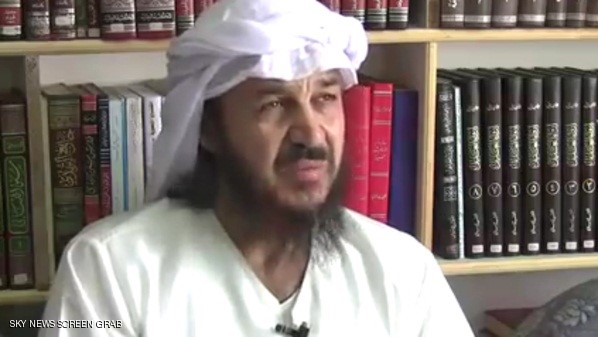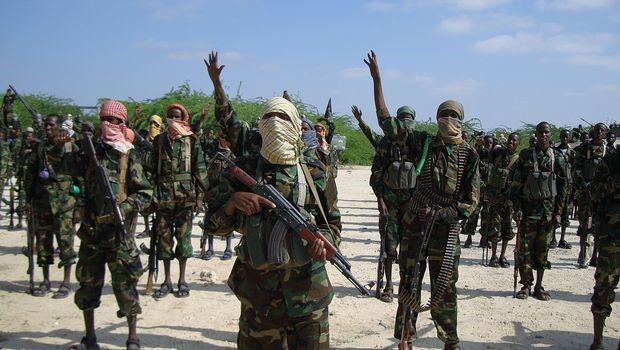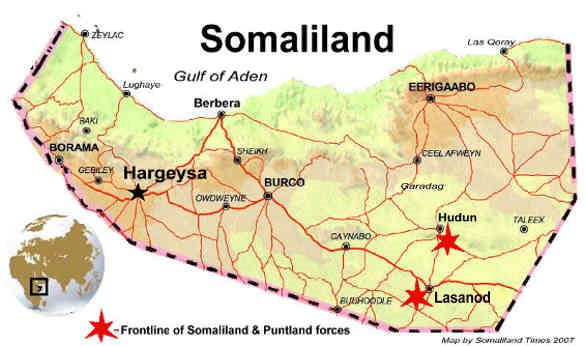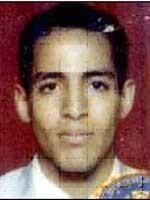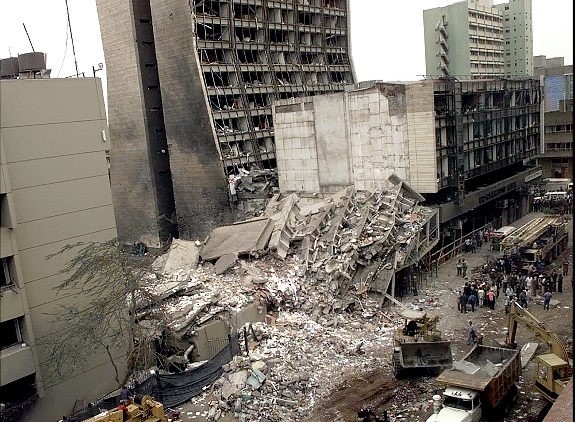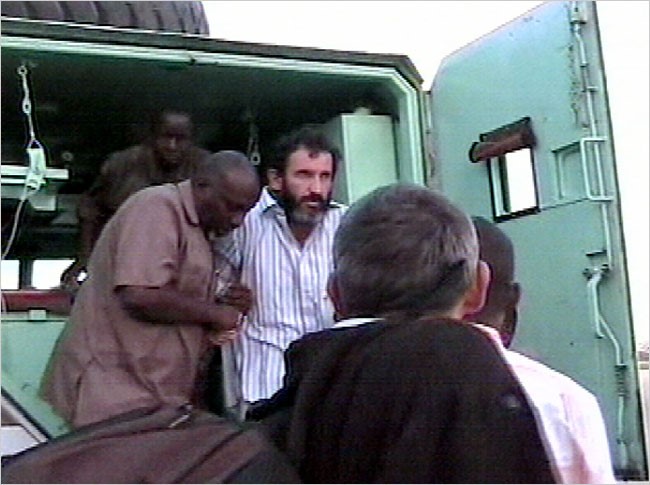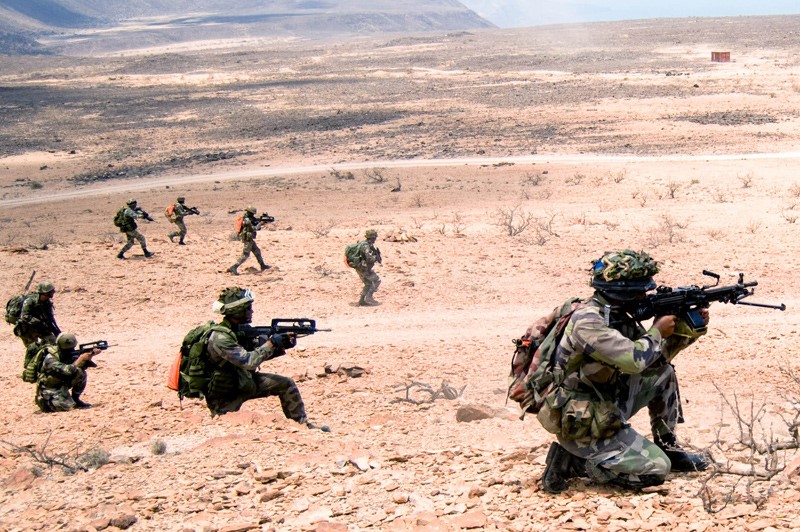Andrew McGregor
January 7, 2010
Tensions continue to rise in the volatile Horn of Africa as Eritrean insurgent groups promise a new wave of political violence following the imposition of UN sanctions against Eritrea for its alleged support of terrorism in the region. Eritrea is strategically located on the Red Sea, sharing borders with Sudan, Ethiopia and Djibouti. A former Italian colony, Eritrea was annexed by Ethiopia in 1962, sparking a long and bitter struggle for independence that concluded in 1991 with the expulsion of Ethiopian forces. According to the 1997 constitution, Eritrea is supposed to be a parliamentary democracy with an elected president, but the constitution has not been implemented and elections have never been held. In practice, Eritrea is a one party state, ruled by the People’s Front for Democracy and Justice (PFDJ) under President Isaias Afewerki, an Orthodox Christian and former leader of the Eritrean People’s Liberation Front (EPLF). Afewerki has been the nation’s sole president since 1993.
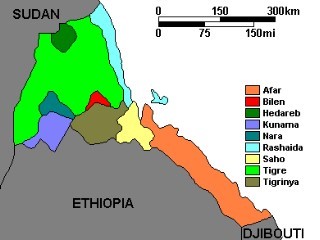 Ethnic Map of Eritrea
Ethnic Map of Eritrea
The Security Council Sanctions
The text of the December 23 Security Council resolution accuses Eritrea of “efforts to destabilize or overthrow” the Transitional Federal Government (TFG) of Somalia. The resolution also calls on Eritrea to withdraw its troops from the border with Djibouti, where they are deployed to pressure Djibouti in a longstanding territorial dispute, calling their deployment “a threat to international security.” Resolution 1907 was approved with 13 votes in favor, one vote against (Libya), and one abstention (China). The sanctions provide for travel restrictions for Eritrean political and military leaders, the freezing of Eritrean assets abroad and an arms embargo on Eritrea. An earlier Security Council resolution, no. 1862, followed fighting between Eritrean and Djiboutian forces in June 2008 and called on Asmara to withdraw its forces from the disputed region along the border, but no action was taken by Eritrean military forces to comply.
The new resolution was drafted by the Ugandan government. Uganda is the main source of troops for the African Union Mission in Somalia (AMISOM), which is now nearly the only armed support of consequence for the TFG. Isaac Musumba, the Ugandan Minister for Regional Cooperation, said Eritrea “provided sanctuary to international criminals. It is a rogue state” (New Vision [Kampala], December 29).
According to Dr. Ilmi Ahmad Du’alem, the UN envoy to Somalia, the sanctions were based “on proof that Eritrea supports terrorism… Eritrea supports [terrorist groups opposed to the Somali government]. Arms, material and moral support to these groups are delivered through Eritrea. Eritrea is the headquarters, and most of the [Somali] opposition is still in Eritrea… There were resolutions before the current one, warning Eritrea to end these actions” (Radio HornAfrik, December 29, 2009).
Eritrea’s Role in Somalia
Islamist opposition group Hizb al-Islam (composed largely of the Asmara-based Alliance for the Re-Liberation of Somalia led by Shaykh Hassan Dahir Aweys), a former partner of al-Shabaab, condemned the sanctions, noting that while other countries were intervening in Somalia, no sanctions had been imposed on them (Mareeg.com., December 24, 2009).
An Ethiopian government spokesman suggested the “international delinquent state of Eritrea” was “promoting and abetting terrorist forces in the region.” A statement from the Eritrean Foreign Ministry described the resolution as a “brazen act” based neither “on fact nor on the provisions of international law. It constitutes a travesty of justice and amplifies the dangers inherent in a unipolar world.” The statement identified Britain, the United States and Uganda as the principal forces behind the resolution:
“It must be stressed that the accusations against Eritrea for involvement in Somalia have never been substantiated or verified… Indeed, how can Eritrea provide logistical support to armed groups in Somalia when it does not have a contiguous border with that country? Eritrea has neither the political will nor the financial clout to bankroll armed groups in Somalia… The United States has simply employed its preponderant influence to ram through unjustifiable sanctions against a small country” (Shabait.com, December 23, 2009).
The Eritrean ambassador to the UN, Araya Desta, said, “The Security Council has decided to impose sanctions on Eritrea based on fabricated lies, mainly concocted by the Ethiopian regime and the US administration” (New Vision [Kampala], December 28).
Strangely enough, the sanctions imposed on Eritrea for supporting al-Shabaab came after senior Shabaab member Shaykh Mukhtar Robow “Abu Mansur” issued a threat to Asmara in October, saying Eritrea opposed the implementation of Shari’a law in Somalia because its leaders were not Muslims. The shaykh added that the non-Muslim regime was ruling the Muslim majority in Eritrea by force (AllPuntland.com, October 31, 2009). It is difficult to assess the reasoning behind this threat, though there are several possibilities:
• Eritrea has ended its support to al-Shabaab in favor of rival Islamist group Hizb al-Islam.
• Al-Shabaab may be doing a favor to the Eritrean regime by publicly denouncing it before the sanctions proposal could be introduced at the UN Security Council.
• The threat may be yet another in a series of self-defeating moves by the increasingly fanatic Shabaab movement.
Eritrea’s envoy to the United Nations described the allegations of military support for groups fighting in Somalia as “lies and propaganda,” indicating that it is archrival Ethiopia that is responsible for fueling the conflict in Somalia, as well as causing instability in the region by occupying lands belonging to its neighbors, including Eritrea (Dayniile, December 20; AllPuntland, December 2, 2009).
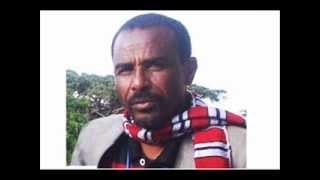 DMLEK Leader Cornelius Osman
DMLEK Leader Cornelius Osman
Eritrea’s Armed Opposition Threatens the Regime
One of the many Eritrean opposition groups saw an opening in the UNSC sanctions. Cornelius Osman, leader of the Democratic Movement for the Liberation of the Eritrean Kunama (DMLEK) said, “This is a good opportunity for us. We are preparing our military forces to launch more attacks. We are inside Eritrea and will hit selected targets and institutions.” The DMLEK chief added that the freeze on foreign assets and travel ban on Eritrean political and military leaders would isolate the regime and “deter it from receiving the hundreds of millions of dollars it gets” annually from the Eritrean diaspora (AFP, December 29, 2009).
DMLEK is a member of the Eritrean Democratic Alliance (EDA), an opposition umbrella group based in Ethiopia. The movement, based on the Kunama people, was formed after Eritrea gained its independence from Ethiopia in 1991.The Kunama are a Nilotic people related to the Nilotic tribes of South Sudan, but in Eritrea they represent only 2% of the population. The Kunama live near the Ethiopian border between the Gash and Setit rivers, an area that has placed them between opposing Eritrean and Ethiopian forces. Another even smaller Nilotic group known as the Nara has formed its own opposition movement – the Eritrean Democratic Resistance Movement Gash-Setit, under Ismael Nada.
DMLEK has claimed a number of small attacks against Eritrean government forces or facilities. Some sense of the scale of these attacks can be gained from examining DMLEK statements:
• In November 2007, DMLEK forces attacked a military outpost at Melezanai, claiming to have killed 15 soldiers and wounding five others. An administrative office at Shambaco was struck by a rocket-propelled grenade (DMLEK Military communiqué, November 8, 2007).
• In January 2008, DMLEK claimed to have destroyed the government’s agricultural office in the town of Binbilina along with goods stored in a warehouse. In the same operation, a water truck and tanker were set ablaze in the town of Barentu (Walta Information Center, January 30, 2008).
• In March 2009, DMLEK claimed to have destroyed a military hospital in the southwest region of Gash-Barka with RPGs, hand grenades and small arms (Sudan Tribune, March 23, 2009).
A North American-based Kunama group has undertaken a campaign to depose Cornelius Osman as the movement’s leader. The group accuses Osman of “kidnapping, imprisoning, torturing and killing a lot of innocent, educated and knowledgeable Kunama” and acting as an agent of the Eritrean government. They claim many Kunama fighters have deserted the organization. [1] Osman addressed the accusations in a Paltalk discussion with members of the Eritrean diaspora. While he did not deny the extra-judicial killings, he identified the victims as “rogue elements” working for the PFDJ regime to sabotage the Kunama movement (Awate.com, November 8, 2009).
The Armed Opposition
There are strong regional, religious, cultural and linguistic divisions in Eritrea. This situation is reflected in the many national and diaspora opposition groups. The Eritrean regime is dominated by members of the Tigrinya ethnic group, who form 50% of the population in Eritrea. Most Tigrinya are Christians, though a minority are Muslims. Many of the opposition groups are based on ethnic minorities that feel excluded from the Eritrean power structure, such as the Afar, the Kunama and the Nara. Regardless of the extent of their military activities, all such opposition groups are termed “terrorists” by the Asmara regime. Most opposition groups oppose what they regard as the “Tigrinization” of the country as well as the nationalization of lands traditionally held by ethnic minority groups.
The large number of opposition groups has so far prevented the emergence of an effective armed opposition to the Asmara regime, but lately this problem has been addressed by the formation of three larger coalitions (Gedab News/Awate.com, February 25, 2007). Last June, DMLEK joined the Red Sea Afar Democratic Organization (RSADO) to form the Democratic Front of Eritrean Nationalities (DFEN). At the conclusion of a two-day congress, DFEN declared its intention to work under the umbrella of the Eritrean Democratic Alliance (EDA) and called on all of Eritrea’s armed opposition groups to coordinate their efforts. The new alliance also called on Eritrea’s Tigrinya to turn against the regime (Gedab News/Awate.com, June 19, 2009). The three main opposition coalitions are preparing a unity conference in Addis Ababa with the intention of forming a single armed opposition front with the aid of Ethiopian authorities (Nharnet, December 25, 2009; Sudan Tribune, December 30, 2009).
Eritrea maintains a massive defense establishment at considerable cost. Universal conscription of both men and women is used to provide the numbers that the government feels necessary to maintain in expectation of a further conflict with Ethiopia. Nevertheless, conscription is unpopular and desertion is common. DMLEK maintains that the Eritrean Defense Forces (EDF) have been “weakened by the economic and political crisis in the country as well as internal resistance” and are fleeing to neighboring countries whenever they get the chance (Walta Information Center, November 21, 2007). There are roughly 180,000 Eritrean refugees living in Sudan, which occasionally sends some asylum seekers back to Eritrea (Sudan Tribune, September 25, 2008).
Conclusion
Opponents of the government make regular efforts to tie the regime to Iran and its alleged support for terrorism in an effort to depict Eritrea as a regional threat (see Terrorism Monitor, April 3, 2009). Typical of this is a recent and unconfirmed story carried on an Arabic-language opposition website that described the offloading of a weapons cargo from an Iranian ship in the port of Massawa under the supervision of representatives of al-Shabaab, the Houthist rebels of northern Yemen and an unnamed Djiboutian insurgent group (Adoulis, December 24). Such efforts are likely to increase as the opposition seeks international support beyond the usual support it receives from Addis Ababa.
For the moment, none of the Eritrean insurgent groups or coalitions appear strong enough to topple the PFDJ government, which has built a strong security structure to ensure its survival. If the opposition succeeds in forming a single front, it may receive military and financial support from the many enemies of the Eritrean government. An outbreak of political violence and even civil war in Eritrea has the potential to drag in Eritrea’s neighbors (particularly Ethiopia) and further inflame the conflict in Somalia and the low-level Afar insurgency in Djibouti, the site of a major American military base.
This article first appeared in the January 7, 2010 issue of the Jamestown Foundation’s Terrorism Monitor

